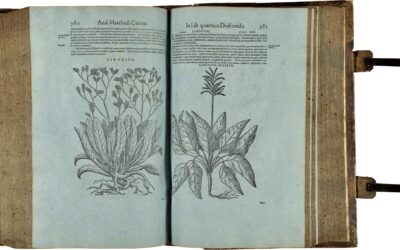
The Basic Lifespan Integration Protocol
The Basic Lifespan Integration Protocol is the foundational technique used in LI therapy. It involves guiding the client through their timeline, from birth to the present moment, while applying specific prompts and techniques to facilitate integration and healing.
Book with a Lifespan Integration Therapist Here
Other Articles on Lifespan Integration
The basic protocol typically follows these steps:
- Grounding and resourcing: The therapist guides the client to feel grounded and present in their body, and to connect with internal and external resources that provide a sense of safety and support.
- Accessing the timeline: The therapist guides the client to visualize or sense their timeline, starting from birth and moving through key milestones and experiences up to the present moment.
- Identifying and processing stuck points: As the client moves through their timeline, the therapist looks for signs of activation or dysregulation, which may indicate a “stuck point” or unresolved trauma. The therapist then uses specific techniques, such as titration, pendulation, or imaginal re-enactment, to gently process and integrate these experiences.
- Linking and integrating: The therapist helps the client to link the processed experience to other related experiences across the timeline, promoting a sense of integration and coherence.
- Returning to the present: The therapist guides the client back to the present moment, ensuring that they feel grounded, resourced, and complete before ending the session.
The basic protocol is typically repeated over multiple sessions, with each iteration helping to deepen the integration process and promote healing across the lifespan.
The PTSD Protocol in Lifespan Integration
The PTSD Protocol is a specific adaptation of the basic LI protocol, designed for clients with post-traumatic stress disorder (PTSD). It aims to process and integrate the traumatic memory that is driving the PTSD symptoms, using a focused, intensive approach.
The PTSD protocol typically involves these steps:
- Preparation and resourcing: The therapist works with the client to establish safety, trust, and a strong therapeutic alliance. The client is guided to identify and strengthen internal and external resources that can support them through the process.
- Accessing the traumatic memory: The therapist guides the client to access the specific traumatic memory that is being targeted, using techniques such as sensory cues, imagery, or body sensation.
- Timelines to the present: Once the memory is accessed, the therapist guides the client rapidly and repeatedly through their timeline, from the time of the trauma to the present moment. This helps to desensitize the emotional charge of the memory and link it to more adaptive experiences and perspectives.
- Integration and closure: After multiple timeline repetitions, the therapist checks in with the client to assess their level of integration and resolution. Additional processing techniques may be used to deepen the integration process. The session is closed with grounding, resourcing, and containment.
The PTSD protocol is a powerful tool for resolving single-incident or acute traumas. It can often lead to significant symptom relief in a relatively short period of time, often within a few sessions.
The Relationship Protocol in Lifespan Integration
The Relationship Protocol is an adaptation of the basic LI protocol that focuses on healing attachment wounds and relational traumas. It aims to help clients resolve painful experiences in past or current relationships, and to develop a more secure and adaptive attachment style.
The relationship protocol typically involves these steps:
- Identifying the target relationship: The therapist works with the client to identify a specific relationship or relational pattern that is causing distress or dysfunction.
- Accessing the timeline of the relationship: The therapist guides the client through the timeline of the target relationship, starting from the beginning and moving through key moments and experiences.
- Processing and integrating stuck points: As in the basic protocol, the therapist looks for signs of activation or dysregulation, indicating unresolved relational traumas or attachment wounds. These stuck points are then processed using specific techniques, such as imaginal dialogues, role-plays, or sensory-motor processing.
- Linking to secure attachment experiences: The therapist helps the client to link the processed relational experiences to moments of secure attachment and connection, either within the target relationship or in other relationships across the lifespan. This helps to rewire attachment patterns and promote more secure, adaptive ways of relating.
- Integration and closure: The therapist ensures that the client feels grounded, resourced, and integrated before closing the session.
The relationship protocol can be a powerful tool for healing attachment traumas, resolving relationship conflicts, and improving interpersonal functioning. It can be used to address a wide range of relational issues, such as parental neglect, childhood abuse, intimate partner violence, or chronic relationship dissatisfaction.
The Birth to Present Protocol in Lifespan Integration
The Birth to Present Protocol is a comprehensive LI technique that aims to promote integration and coherence across the entire lifespan. It involves guiding the client through their complete timeline, from birth to the present moment, while processing and linking key experiences along the way.
The birth to present protocol typically unfolds over a series of sessions, each focusing on a specific developmental stage or time period. The therapist works with the client to identify significant memories, milestones, and themes from each stage, and to process any unresolved traumas or stuck points that emerge.
As the client moves through their timeline, the therapist uses a variety of techniques to facilitate integration and healing, such as:
- Sensory-motor processing: Guiding the client to track and process bodily sensations, movements, and impulses related to each experience.
- Imaginal re-enactment: Inviting the client to imaginally re-enter and re-process key experiences, with the support and guidance of the therapist.
- Developmental repair: Providing corrective experiences that help to fill in developmental gaps or deficits, such as missed experiences of attunement, mirroring, or co-regulation.
- Meaning-making: Helping the client to make sense of their experiences and to find new, more empowering meanings and narratives.
Over time, the birth to present protocol helps to create a deep sense of integration, continuity, and coherence across the lifespan. Clients often report feeling more whole, grounded, and self-assured, with a greater capacity for self-reflection, self-compassion, and self-leadership.
Adapting Lifespan Integration Techniques for Individual Needs
While the basic LI protocols provide a powerful framework for healing and integration, they are not one-size-fits-all. Skilled LI therapists know how to adapt and customize the techniques to meet the unique needs and preferences of each individual client.
Some of the ways that LI techniques can be adapted include:
- Pacing and titration: Adjusting the speed, intensity, and depth of the processing to match the client’s capacity and tolerance.
- Modality of processing: Using different sensory modalities (visual, auditory, kinesthetic) or expressive arts (drawing, writing, movement) to facilitate processing.
- Developmental level: Adapting the language, metaphors, and interventions to match the client’s developmental stage and cognitive abilities.
- Cultural and spiritual considerations: Incorporating the client’s cultural background, values, and spiritual beliefs into the therapy process.
- Integration with other approaches: Combining LI techniques with other compatible modalities, such as EMDR, neurofeedback, or cognitive-behavioral therapy.
The key is to remain flexible, attuned, and responsive to the client’s unique needs and experiences. By adapting the LI techniques in a way that feels safe, resonant, and meaningful for each individual, therapists can help to optimize the healing process and promote lasting, transformational change.
Book with a Lifespan Integration Therapist Here
Other Articles on Lifespan Integration
Bibliography
Balkus, K. S. (2012). Lifespan Integration effectiveness in traumatized women [Doctoral dissertation, Northcentral University]. ProQuest Dissertations and Theses Global.
Binet, E. P., Tarquinio, C., & Tarquinio, P. (2016). Lifespan Integration therapy for child sexual abuse: A qualitative analysis of the clients’ perception and experience of treatment. Journal of Child Sexual Abuse, 25(6), 614-634. https://doi.org/10.1080/10538712.2016.1191655
Hu, E., Gao, J., Rashid, R., Li, Z., & Ding, L. (2019). The effectiveness of Lifespan Integration therapy for PTSD: A case report. SAGE Open Medical Case Reports, 7, 2050313X19832647. https://doi.org/10.1177/2050313X19832647
Kaur, J. (2013). Lifespan Integration therapy with complex PTSD: A case study. International Journal of Psychotherapy, 17(1), 59-68. https://doi.org/10.36075/IJP.2013.17.1.59
Kwon, S., & Kim, S. (2021). The effectiveness of Lifespan Integration therapy on depressive symptoms and quality of life in patients with major depressive disorder. Journal of Affective Disorders, 282, 392-398. https://doi.org/10.1016/j.jad.2020.12.160
Pace, P. (2003). Lifespan Integration: Connecting ego states through time (1st ed.). Self-published.
Pace, P. (2012). Lifespan Integration: The Basics. Unpublished manuscript.
Steele, K., Boon, S., & Van der Hart, O. (2016). Treating trauma-related dissociation: A practical, integrative approach. W. W. Norton & Company.
Thorpe, G. L. (2015). Lifespan Integration efficacy: A mixed methods multiple case study [Doctoral dissertation, Sofia University]. ProQuest Dissertations and Theses Global.
Thorpe, G. L., & Jeppsen, B. (2017). Lifespan Integration therapy for older adults with depression and anxiety: A preliminary study. Journal of Psychotherapy Integration, 27(4), 536-542. https://doi.org/10.1037/int0000077
Other References:
American Psychological Association. (2017). Clinical practice guideline for the treatment of posttraumatic stress disorder (PTSD) in adults. American Psychological Association.
Ogden, P., & Fisher, J. (2015). Sensorimotor psychotherapy: Interventions for trauma and attachment. W. W. Norton & Company.
Siegel, D. J. (2012). The developing mind: How relationships and the brain interact to shape who we are (2nd ed.). Guilford Press.
Van der Kolk, B. A. (2014). The body keeps the score: Brain, mind, and body in the healing of trauma. Viking.
Types of Therapy






















0 Comments